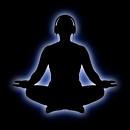During the workout, try to feel the heaviness and rigidity of the body. Feel the body’s initial resistance to movement. Feel the inertia. Understand the body’s heaviness, rigidity, resistance, or inertia as an indirect experience of the element of earth. Likewise, feel body heat and physical pain as indirect experiences of the element of fire.
Then feel the movements involved in your limbs, the contraction and expansion of the chest and the movement of breath. Understand this feeling as an indirect experience of the element of air.
Finally, become aware of how the
body flows into different postures.
Become aware of the body’s
cohesiveness and the
interconnectivity of cartilage,
muscles, tendons, and bones.
You may not be able to feel this
conspicuously. Nevertheless,
understand these qualities as an
indirect experience of the element
of water.
In this way, through actual
experience, come to understand
how the body is a material
phenomenon made up of the
four essential elements of matter.
Such an experience has profound
implications. Knowing pain
as the element of fire, rather than
as pain, can significantly reduce your
reaction to pain. Knowing the body’s
heaviness and inertia as the element
of earth can significantly improve your
body’s flexibility by reducing your
reactivity to sloth and torpor.
With ardent and diligent practicing of such meditation while exercising, a stage will come when you will know with certainty that your body is nothing but a bundle of material elements that come and go based on conditionality. You will also realize that you do not have absolute control over the body. For example, when you feel pain while lifting a heavy weight, try to eradicate the pain by simply commanding the body. Nothing happens, right? When you run out of breath while swimming, try to direct the body to swim anyway. The body does not obey. Pain will go away only if you reduce the weight or train appropriately. The body will swim only if you slow down and catch a breath or condition it properly.
Although so downright obvious, make a note of these things. Provided you have developed a certain degree of meditativity, such noting will give rise to a fundamental question in your mind: “How can I call this body mine when I do not have absolute control over it?” You will then begin to contemplate the autonomous functions of the body (for example, growth, digestion, aging, wound recovery, sleep, and excretion) that occur without you telling the body what to do.
You may begin to wonder, “Who is commanding the body? Where is the ‘I’ in the body?” If you reach this lucky moment, try to feel the “I” in the body and realize that the only thing you could feel were the four material elements.
basically, through this practice you are trying to understand that your previous feelings, experiences, and awareness of the four material elements have been mistakenly construed as the “I.”
Copyright 2008 SOUL Research Institute
C
Exercising has a tendency to make us body-centered if it is not done intelligently. Body-centeredness arises due to the increasing physical strength, flexibility, and beauty resulting from an exercise regimen. The purpose of this practice is to transform exercising (something as simple as walking on a treadmill, as intense as martial arts and weight-lifting, or as fluid as yoga and tai-chi) into a means of developing awareness of the body and equanimity towards the body without losing out on health benefits, without spending extra time, and most importantly, minimizing body-centeredness.
Pick an exercise to do of any kind—it’s your choice—and begin a workout with the intention of developing whole-body awareness. Like developing intelligent work habits, while exercising, aim to be mindful of every single movement you make, every shifting position of your limbs, and your overall posture. For example, while running on a treadmill, do not watch TV. Instead watch yourself. Try to observe the pace of the running, its rhythm, and your hands as they move in sync with your feet. If you want, you may count your steps, however only up to ten. At ten, start over. You don’t want to get carried away in counting. Your aim is to focus on becoming aware of the body outwardly.
In the same manner, while weight lifting, become aware of the grips and the movement of your limbs as you lift and drop the weights. Observe all your movements and all the sequences of movement you do with open eyes. Again, the key is to not feel bodily sensations but rather to simply look at the body as a third person would. If you do this, especially in a repetitive exercise, such as running or walking on a treadmill, sooner or later you will experience the body as a body and not your body due to the maturing of whole-body awareness.
In the beginning you may find it hard not to watch TV or not to listen to music while you’re working out. Don’t force yourself. Simply make a genuine effort to devote all your senses to the workout. Give your 100 percent to this perspective, so that you not only exercise the body but also the mind without spending extra time. Developing body awareness is a mental exercise.
Maintaining body awareness during your workouts significantly reduces the chance of physical damage caused by overstretching, overstraining, overworking, or overlooking. It also accelerates gains in physical strength, flexibility, and beauty, and does so without generating pride and vanity about such qualities.
For serious spiritual practitioners, in addition to the outward awareness practice we have discussed, I recommend the following inward awareness practice. The main difference between the two is that in the inward awareness practice you train yourself to feel the body. The purpose is to become aware of its real makeup and thereby remove subtler bodily attachment.
Begin with the intention of becoming aware of the four essential material elements of which the body is ultimately made: earth, water, fire, and air. If necessary, spend a few moments reviewing and recollecting the characteristics and functions of these elements, as discussed in previous chapters. Then, start a rigorous exercise of your choice.
bliss
INTELLIGENT EXERCISING







